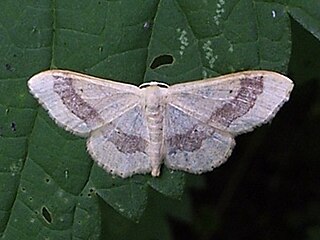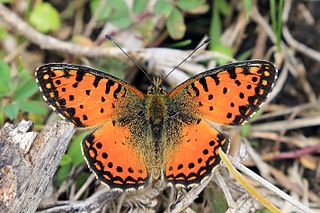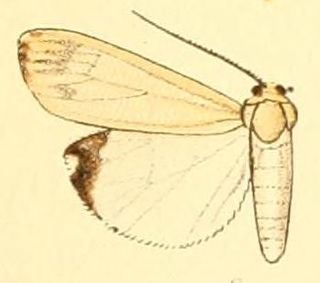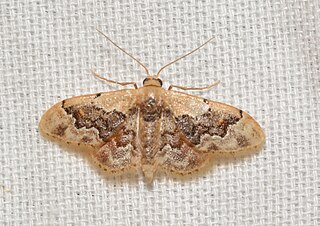
The Queen of Spain fritillary is a butterfly of the family Nymphalidae.

Amanita gemmata, commonly known as the gemmed amanita or the jonquil amanita, is an agaric mushroom of the family Amanitaceae and genus Amanita. The fruit body has a cap that is a dull to golden shade of yellow, and typically 2.5–12 centimetres in diameter. The cap surface is sticky when moist, and characterized by white warts, which are easily detached. It is initially convex, and flattens out when mature. The flesh is white and does not change colour when cut. The gills are white and closely spaced. The stem is pale yellow, and measures 4–12 cm long by 0.5–1.9 cm thick. The partial veil that covers the young fruit body turns into the ring on the stem at maturity. The spore print is white. It resembles numerous other species.

Epicopeiidae is a family of insects in the order Lepidoptera. They are known as oriental swallowtail moths as they closely resemble some oriental swallowtail butterflies. Epicopeiidae have highly varied structure in regards to body size and wing shape. Epicopeiidaen wing patterns are involved in complicated mimicry rings.

Idaea, sometimes called Hyriogona, is a large genus of geometer moths. It was erected by Georg Friedrich Treitschke in 1825. They are found nearly worldwide, with many native to the Mediterranean, the African savannas, and the deserts of western Asia.
Camptoloma is a genus of moths in the family Nolidae. It was formerly incorrectly placed in Arctiidae.

Cosmosoma is a genus of tiger moths in the subfamily Arctiinae. The genus was erected by Jacob Hübner in 1823.

Euchromia is a genus of moths in the subfamily Arctiinae. The genus was erected by Jacob Hübner in 1819.

Udea is a genus of snout moths in the subfamily Spilomelinae of the family Crambidae. The genus was erected by Achille Guenée in 1845. The currently known 216 species are present on all continents except Antarctica. About 41 species are native to Hawaii.

Trisuloides is a genus of moths of the family Noctuidae.

Issoria is a genus of butterflies in the family Nymphalidae commonly found in the Palearctic realm, Africa, and South America.

Issoria baumanni, Baumann's mountain fritillary, is a butterfly in the family Nymphalidae. It is found in Nigeria, Cameroon, the Democratic Republic of the Congo, Uganda, Rwanda, Burundi and Tanzania. The habitat consists of grassland, marshy areas and forest margins at high altitudes.

Issoria hanningtoni, the Hannington's fritillary, is a butterfly in the family Nymphalidae. It is found in Sudan, Kenya and Tanzania. The habitat consists of highland forests.
Cosmosoma gemmata is a moth of the family Erebidae. It was described by Arthur Gardiner Butler in 1876. It is found in Panama and Colombia.

Utetheisa lactea is a moth of the family Erebidae. It was described by Arthur Gardiner Butler in 1884 and is found in the Seychelles.
Euchromia gemmata is a moth of the subfamily Arctiinae. It was described by Arthur Gardiner Butler in 1887. It is found on the Solomon Islands.

Issoria eugenia is a small butterfly found in the East Palearctic that belongs to the family Nymphalidae.

Idaea gemmata is a species of geometrid moth in the family Geometridae. It is found in North America.














